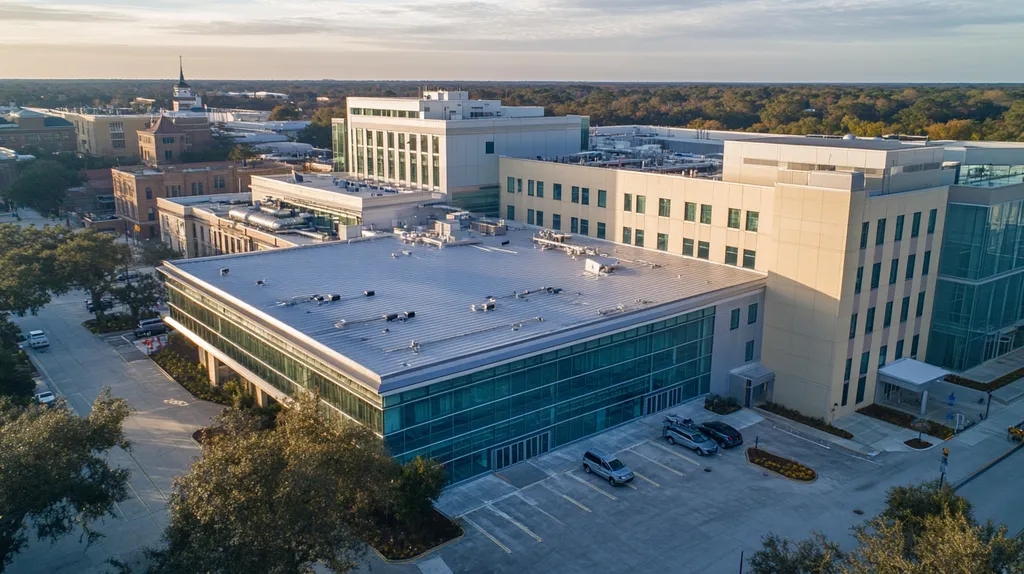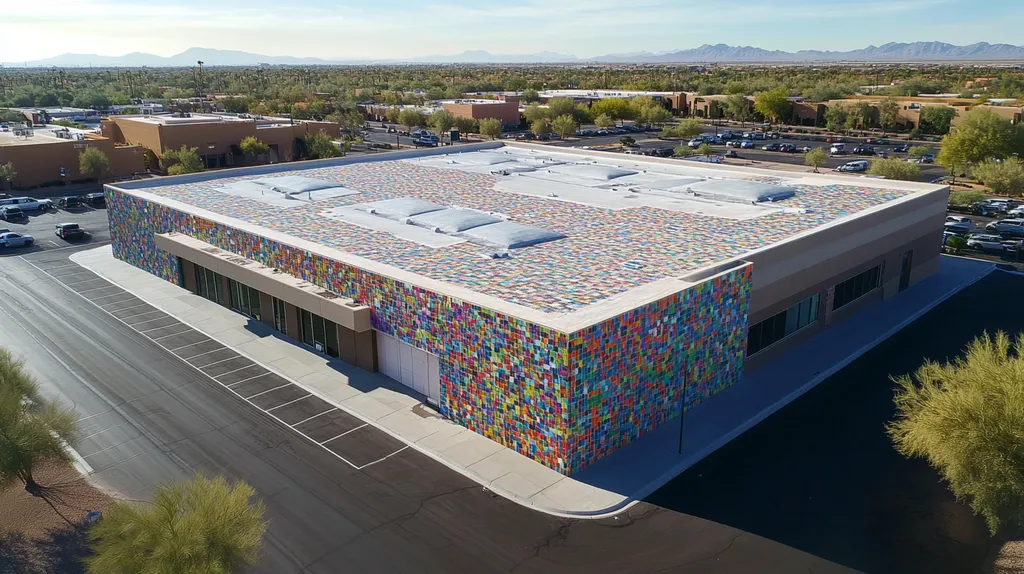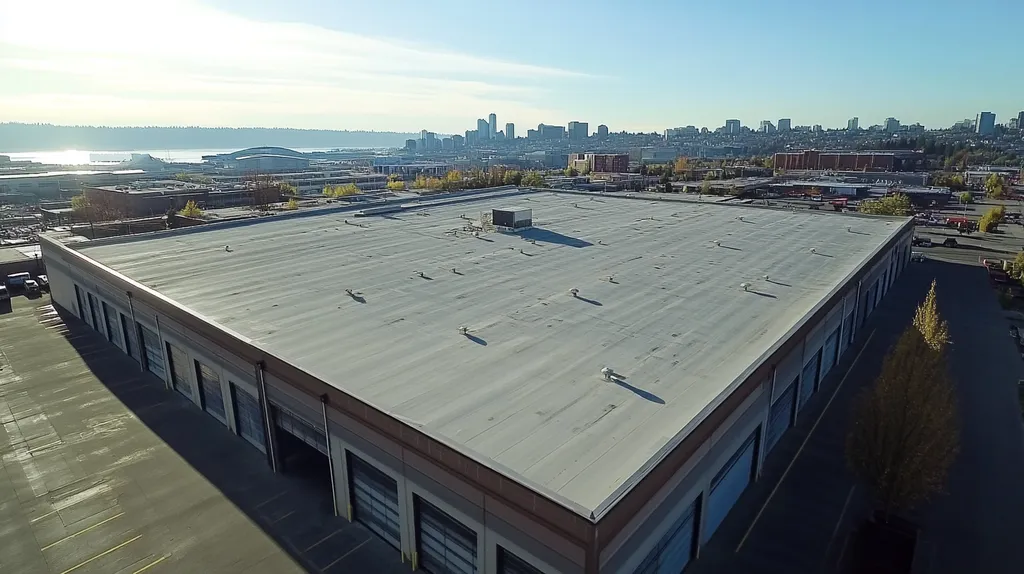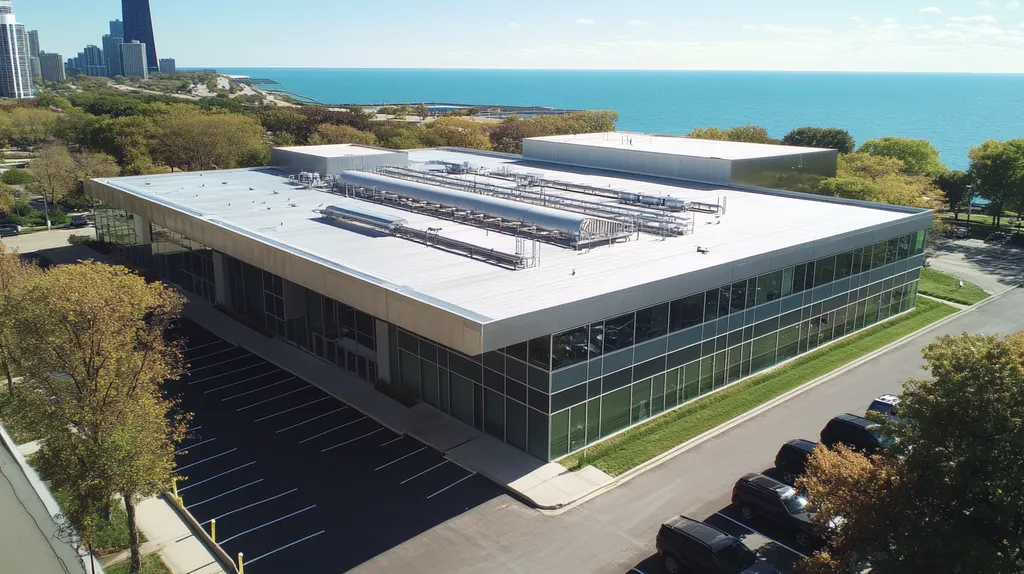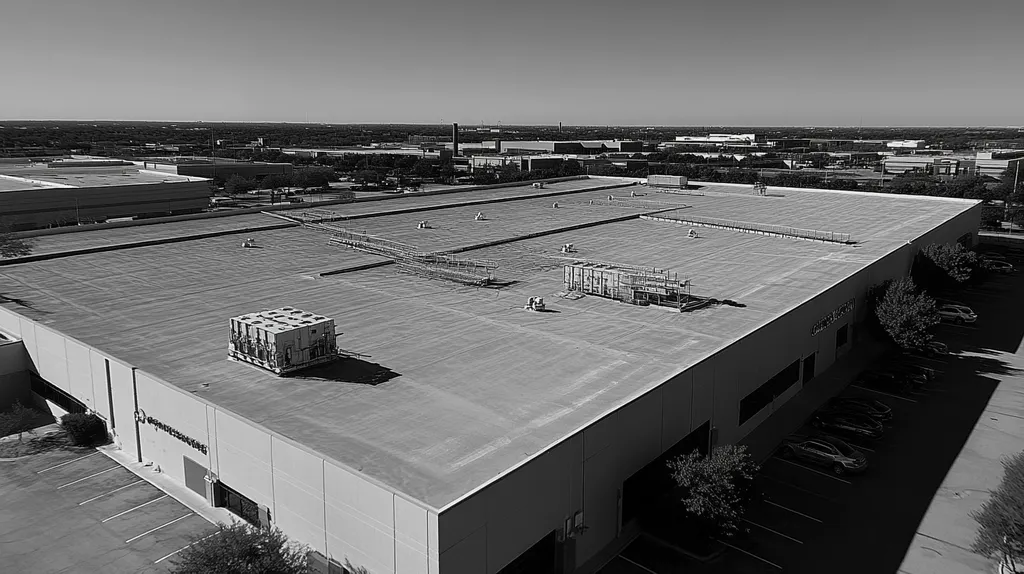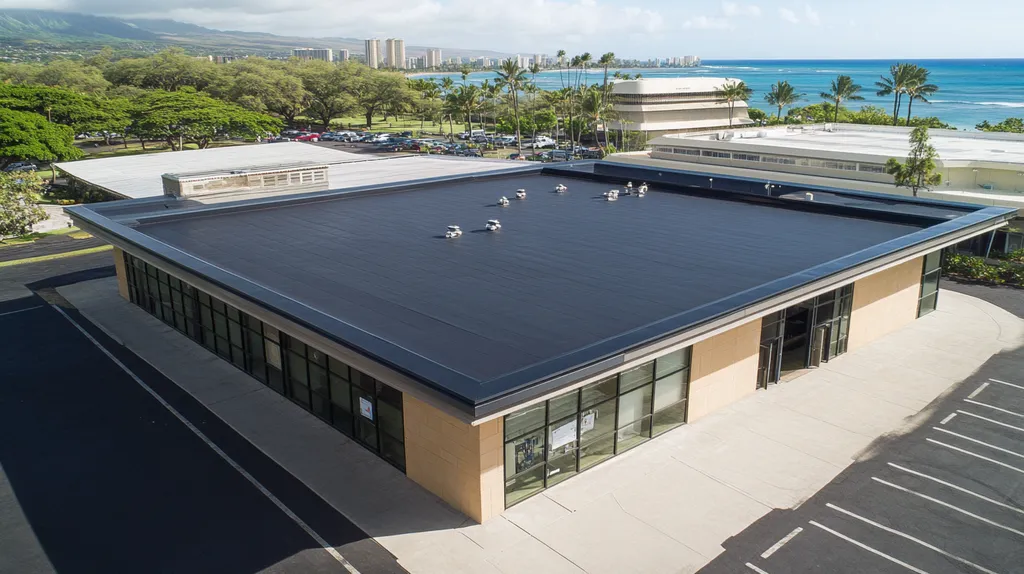Welcome to today’s Battle Royale featuring two roofing heavyweights: “Polyurethane Coatings” in the east corner versus “Polyurea Coatings” in the west!
Tonight’s showdown pits these contenders against each other across six punishing rounds designed to test every aspect of their performance for Industrial Roof Layering.
At stake? Millions in potential costs, decades of building protection, and the critical performance demands of modern commercial and industrial facilities.
Our professional judging panel will evaluate each round on technical merit, real-world performance, and value delivery. After all six rounds, we’ll declare our ultimate champion.
Ladies and gentlemen, facility managers and building owners… it’s time to rumble!
ROUND 1: INITIAL COSTS & INSTALLATION
When selecting industrial roof coatings, the initial investment and installation process can impact operational costs for decades. Recent industry data shows that improper coating selection leads to premature failures in 35% of industrial roofs within the first five years. Understanding the nuances of material costs, installation requirements, and project timing helps facility managers avoid costly mistakes.
Material Expenses
Industrial coating materials represent a significant portion of any roofing project’s budget. Polyurethane coatings typically cost 15-25% less per square foot than their polyurea counterparts, making them an attractive option for cost-conscious facility managers.
Polyurethane coatings offer proven durability while remaining budget-friendly. Their widespread availability and established supply chains help maintain competitive pricing across different manufacturers and regions.
Polyurea coatings command premium prices due to their advanced chemical formulations and specialized manufacturing processes. While their enhanced performance characteristics justify the cost for some applications, the higher material expense can strain project budgets.
For material expenses, polyurethane coatings gain a clear ADVANTAGE due to their lower cost and market accessibility.
Installation Complexity
Industrial-grade roof coatings can be applied by professionals with standard equipment and training, reducing specialized labor requirements. Polyurethane coatings feature forgiving application windows and user-friendly installation processes that minimize the risk of errors. (source: ArmorGarage)
These coatings allow crews to maintain consistent quality across large roof areas. Their moderate cure times provide adequate working time for proper installation and detail work.
Polyurea applications demand precise temperature and humidity conditions, along with specialized spray equipment. The rapid cure rate leaves little room for error, requiring highly skilled technicians and careful coordination.
Regarding installation complexity, polyurethane coatings secure another ADVANTAGE through their more straightforward application process.
Project Timeline
Project duration directly impacts facility operations and overall costs. Polyurethane coating installations typically proceed at a steady pace, with predictable cure times that allow for efficient project scheduling.
The controlled curing process enables crews to complete large sections methodically. This systematic approach helps maintain quality while meeting projected completion dates.
Polyurea installations often require more extensive surface preparation and precise environmental controls. While the actual coating cures rapidly, the total project timeline can extend due to these additional requirements.
In project timeline considerations, polyurethane coatings gain the ADVANTAGE through their more predictable scheduling and efficient installation process.
ROUND 1 WINNER: POLYURETHANE COATINGS
ROUND 2: DURABILITY & LIFESPAN
Industrial roof coating failures can result in catastrophic damage, with repair costs often exceeding $500,000 for large facilities. The durability and lifespan of protective coatings directly impact both maintenance budgets and business continuity. Understanding how different coating systems perform under stress helps facility managers protect their assets and avoid unexpected failures.
Durability Against Environmental Factors
Environmental resistance determines how well a coating system protects the underlying roof structure. Polyurethane coatings demonstrate good UV stability and moderate impact resistance, making them suitable for typical commercial environments.
However, these coatings can become brittle over time when exposed to extreme temperature fluctuations. They also show vulnerability to ponding water, which can lead to coating degradation and eventual failure.
Polyurea coatings exhibit superior resistance to extreme weather conditions, including hail impact and thermal shock. Their molecular structure creates an exceptionally tough membrane that maintains flexibility even in harsh environments.
For environmental durability, polyurea coatings gain the ADVANTAGE through superior physical properties and weather resistance.
Lifespan Expectations
The expected service life of a coating system directly affects its long-term value proposition. Polyurethane coatings typically last 10-15 years when properly maintained, requiring periodic recoating to maintain protection.
Regular maintenance inspections can help extend polyurethane coating life, but eventual degradation is inevitable. The coating’s gradual loss of flexibility often leads to cracking and separation at seams.
Polyurea coatings consistently achieve 20+ year lifespans with minimal maintenance requirements. Their superior bond strength and resistance to degradation result in significantly longer service life.
In lifespan considerations, polyurea coatings secure another clear ADVANTAGE.
Chemical Resistance
Industrial environments often expose roof coatings to harsh chemicals and pollutants. Polyurethane coatings offer moderate chemical resistance but can break down when exposed to strong solvents or acids.
This vulnerability requires careful monitoring in facilities where chemical exposure is likely. Repairs or recoating may be necessary if chemical damage occurs.
Polyurea coatings demonstrate exceptional resistance to most industrial chemicals, including acids, bases, and solvents. Their dense molecular structure prevents chemical penetration and degradation.
For chemical resistance, polyurea coatings claim the ADVANTAGE through superior protection against industrial exposures.
ROUND 2 WINNER: POLYUREA COATINGS
ROUND 3: PERFORMANCE FACTORS
Performance metrics drive critical decisions in industrial roofing, where system failures can trigger cascading costs. Industry data shows that inadequate performance characteristics lead to premature coating failures in 40% of industrial facilities within seven years. Understanding how different coating systems perform under real-world conditions helps facility managers protect their assets and maintain operational continuity.
Durability Under Extreme Conditions
Industrial roofs face constant assault from UV radiation, thermal cycling, and chemical exposure. Polyurethane coatings demonstrate good UV stability and moderate impact resistance, providing reliable protection in standard commercial environments.
These coatings can become brittle when exposed to extreme temperature fluctuations. Their vulnerability to sustained chemical exposure and ponding water requires careful monitoring and maintenance.
Polyurea coatings exhibit exceptional resistance to physical impacts, thermal shock, and chemical exposure. Their molecular structure maintains flexibility even under severe environmental stress, preventing common failure modes.
For extreme condition durability, polyurea coatings claim the ADVANTAGE through superior physical properties and chemical resistance.
Maintenance Requirements
Elastomeric coatings now represent over 67% of industrial roof coating applications, driven by their proven performance and energy efficiency benefits. (source: Grandview Research)
Polyurethane coatings require regular inspections and periodic maintenance to maintain their protective properties. Their gradual degradation pattern allows for planned interventions, but maintenance costs accumulate over time.
Polyurea coatings demonstrate significantly lower maintenance requirements due to their superior durability and chemical resistance. Their robust composition resists degradation, reducing the frequency and scope of maintenance interventions.
Regarding maintenance demands, polyurea coatings secure the ADVANTAGE through reduced upkeep requirements.
Thermal Performance Efficiency
Thermal efficiency directly impacts facility operating costs and environmental control. Polyurethane coatings offer good thermal resistance and reflectivity, helping regulate building temperatures.
However, their thermal performance can degrade over time as the coating weathers and loses reflective properties. This degradation often requires recoating to maintain energy efficiency.
Polyurea coatings maintain superior thermal performance throughout their service life. Their dense structure and resistance to degradation ensure consistent temperature control and energy savings.
In thermal efficiency considerations, polyurea coatings gain another ADVANTAGE through sustained performance.
ROUND 3 WINNER: POLYUREA COATINGS
ROUND 4: MAINTENANCE REQUIREMENTS
Maintenance oversights in industrial roofing systems trigger catastrophic failures costing facilities an average of $2.5 million in repairs and operational disruptions annually. Research indicates that 45% of premature coating failures stem directly from inadequate maintenance programs. Understanding maintenance requirements helps facility managers protect their assets while optimizing operational budgets.
Inspection Frequency
Regular inspections form the cornerstone of effective roof maintenance programs. Polyurethane coatings typically require quarterly inspections to identify potential issues before they escalate into major problems.
These inspections must evaluate coating adhesion, surface degradation, and seam integrity. Early detection of issues allows for targeted repairs that prevent more extensive damage.
Polyurea coatings demonstrate superior durability, reducing mandatory inspection intervals to semi-annual checks. Their resistance to environmental damage and outstanding adhesion properties minimize the risk of coating failures between inspections.
For inspection requirements, polyurea coatings gain the ADVANTAGE through reduced monitoring needs.
Repair Protocols
Maintenance repairs significantly impact facility operations and budgets. Polyurethane coating repairs require careful surface preparation and specific environmental conditions for proper adhesion.
These repairs often necessitate extensive dry time and can be complicated by weather conditions. The coating’s sensitivity to moisture during repairs increases the risk of adhesion failures.
Polyurea coating repairs benefit from rapid cure times and superior adhesion properties. Their ability to bond effectively with existing coatings simplifies repair procedures and reduces facility downtime.
In repair considerations, polyurea coatings secure another ADVANTAGE through simplified procedures and faster return to service.
Long-term Maintenance Costs
Lifecycle maintenance expenses directly affect a coating system’s total cost of ownership. Polyurethane coatings typically require more frequent touch-ups and periodic recoating to maintain their protective properties.
These ongoing maintenance requirements increase labor costs and material expenses over time. The coating’s gradual degradation often leads to expanding maintenance needs as the system ages.
Polyurea coatings demonstrate significantly lower maintenance costs due to their superior durability and chemical resistance. Their resistance to degradation reduces the frequency and scope of required maintenance interventions.
For long-term maintenance costs, polyurea coatings claim the ADVANTAGE through reduced upkeep requirements.
ROUND 4 WINNER: Polyurea Coatings
ROUND 5: SUSTAINABILITY CREDENTIALS
Environmental impact now drives major facility decisions, with sustainable roofing practices directly affecting both operational costs and corporate environmental goals. Industry data shows that inefficient roofing systems can increase energy consumption by up to 40% while contributing significantly to landfill waste. Understanding how different coating options align with sustainability objectives helps facility managers make environmentally responsible choices that also protect their bottom line.
Eco-Friendliness of Materials
The elastomeric coatings market continues to expand, driven by increasing demands for sustainable building materials. Polyurethane coatings typically contain up to 25% recycled content and emit relatively low levels of volatile organic compounds during application.
These coatings’ extended service life reduces material consumption and waste generation over time. Their formulation allows for eventual recoating without complete removal, further minimizing environmental impact.
Polyurea coatings, while durable, often contain fewer recycled materials due to their specialized chemical composition. Their rapid cure times can result in higher VOC emissions during installation, though overall environmental impact remains moderate.
For material sustainability, polyurethane coatings claim the ADVANTAGE through higher recycled content and lower emissions.
Energy Performance
Energy efficiency directly impacts both operational costs and environmental footprint. Polyurethane coatings demonstrate excellent solar reflectivity, with properly maintained systems reflecting up to 85% of solar radiation.
These reflective properties help reduce cooling loads and associated energy consumption. The coatings maintain their reflective performance with basic maintenance, ensuring long-term energy benefits.
Polyurea coatings provide good thermal resistance but typically offer lower solar reflectivity than polyurethane alternatives. Their reduced reflective properties can result in higher cooling requirements and increased energy consumption.
Regarding energy performance, polyurethane coatings secure another ADVANTAGE through superior reflective properties.
System Longevity
Extended service life reduces replacement frequency and associated environmental impacts. Polyurethane coatings maintain their protective properties for 15-20 years when properly maintained, minimizing material consumption and disposal requirements.
The ability to recoat these systems without complete removal further extends their environmental benefits. This characteristic significantly reduces construction waste and installation-related emissions.
Polyurea coatings demonstrate excellent durability but may require complete removal for eventual replacement. This limitation can increase waste generation and environmental impact during system renewal.
In system longevity considerations, polyurethane coatings gain the ADVANTAGE through recoating capabilities and waste reduction.
ROUND 5 WINNER: Polyurethane Coatings
ROUND 6: SPECIALIZED APPLICATIONS
Industrial facilities face unique roofing challenges that standard solutions often fail to address. Recent data shows that 42% of specialized industrial applications experience premature coating failures due to mismatched performance requirements. Understanding how different coating systems perform under extreme conditions helps facility managers protect critical operations while avoiding costly shutdowns.
Chemical Resistance
In industrial environments, roof coatings must withstand constant exposure to harsh chemicals, solvents, and industrial byproducts. The elastomeric coatings market continues expanding rapidly, driven by increasing demands for chemical-resistant building materials. (source: Grand View Research)
Polyurethane coatings provide moderate chemical resistance but can degrade when exposed to strong acids, bases, or petroleum products. Their molecular structure becomes compromised under sustained chemical attack, leading to potential coating failures.
Polyurea coatings demonstrate exceptional resistance to most industrial chemicals due to their tightly cross-linked molecular structure. They maintain their protective properties even when subjected to harsh chemical environments.
For chemical resistance, polyurea coatings claim the ADVANTAGE through superior protection against industrial exposures.
Temperature Tolerance
Extreme temperature variations can severely impact coating performance and longevity. Thermal cycling creates expansion and contraction stresses that test the limits of coating flexibility and adhesion.
Polyurethane coatings become brittle in cold conditions and may soften excessively in high heat. This temperature sensitivity can lead to cracking, delamination, and premature coating failure.
Polyurea coatings maintain their physical properties across a much wider temperature range. Their superior flexibility and thermal stability prevent common temperature-related failures.
Regarding temperature tolerance, polyurea coatings secure another ADVANTAGE through consistent performance across extreme conditions.
Adhesion Properties
Strong substrate adhesion becomes critical in specialized applications where coating separation could compromise facility operations. Poor adhesion leads to coating delamination, allowing moisture and chemicals to attack the underlying structure.
Polyurethane coatings provide good initial adhesion but may lose bond strength over time. Their adhesion properties can be compromised by substrate movement, chemical exposure, and thermal cycling.
Polyurea coatings create exceptionally strong chemical bonds with properly prepared substrates. Their superior adhesion properties resist delamination even under severe stress conditions.
In adhesion considerations, polyurea coatings gain the ADVANTAGE through stronger, more durable substrate bonds.
ROUND 6 WINNER: Polyurea Coatings
AND THE WINNER IS…
After six bruising rounds of technical warfare, ladies and gentlemen, we have our champion! With four decisive round victories, POLYUREA COATINGS claims the championship belt in this industrial roofing showdown!
Polyurea dominated the battle through superior durability, chemical resistance, and performance under extreme conditions. Its knockout punches came in rounds 2, 3, 4, and 6, where it demonstrated unmatched toughness and longevity that left its opponent reeling.
But don’t count polyurethane out of the game entirely! This seasoned veteran still packs a powerful punch in cost-effective applications and sustainability requirements, claiming decisive victories in rounds 1 and 5. For budget-conscious projects without extreme chemical exposure, polyurethane remains a solid contender.
Remember, facility managers and building owners: Every structure faces unique challenges. Local climate conditions, regulatory requirements, and specific facility demands can all impact coating performance. While tonight’s match provides valuable insights, consulting with qualified roofing professionals remains essential for your specific application.
In the high-stakes arena of industrial roofing, true victory comes not from blindly backing the champion, but from strategically matching your facility’s specific requirements with the right coating’s strengths. Now, let’s hear it one more time for our new heavyweight champion – POLYUREA COATINGS!
FREQUENTLY ASKED QUESTIONS
Q. What are the initial costs of commercial roof coatings?
A. The initial costs vary, with polyurethane coatings generally being 15-25% cheaper than polyurea. This price difference can significantly impact a facility’s budget. Understanding the costs involved allows managers to make more informed decisions during the coating selection process.
Q. How do durability and lifespan compare between coatings for industrial roofs?
A. Polyurethane coatings usually last 10-15 years, while polyurea coatings can exceed 20 years. This longevity is crucial for minimizing maintenance and replacement costs. Understanding lifespan helps managers plan for future budgets and maintenance schedules effectively.
Q. Which coating performs better under extreme environmental conditions?
A. Polyurea coatings outperform polyurethane under extreme temperatures and harsh conditions. Their superior flexibility and resistance to environmental stressors make them ideal for challenging industrial environments. This performance can prevent costly failures and prolong roof integrity over time.
Q. How often should we inspect coatings on an industrial roof?
A. Polyurethane coatings typically require quarterly inspections, while polyurea coatings can be checked semi-annually. Regular inspections allow for early detection of issues, preventing costly repairs and maintaining roof integrity. Facilities can save money and extend the lifespan of their roofing systems through diligent monitoring.
Q. Which coating is more environmentally friendly for commercial roofs?
A. Polyurethane coatings have higher recycled content and lower VOC emissions compared to polyurea. Their formulation allows for recoating without full removal, reducing material waste. Selecting eco-friendly materials can significantly align facility operations with sustainability goals while also minimizing environmental impact.
Q. Can specialized applications benefit from polyurea coatings on industrial roofs?
A. Yes, polyurea coatings excel in specialized applications due to their superior chemical resistance and temperature tolerance. They withstand harsh conditions better, reducing the likelihood of premature failures. Understanding coating properties is essential for ensuring optimal performance in unique operational settings.
Q. How can coating selection impact the total cost of ownership for commercial roofs?
A. Coating selection affects initial costs, maintenance needs, and service life. While cheaper options may save money upfront, they can lead to higher long-term expenses through repairs and replacements. Understanding these factors helps facility managers make cost-effective decisions that align with their budget constraints.

